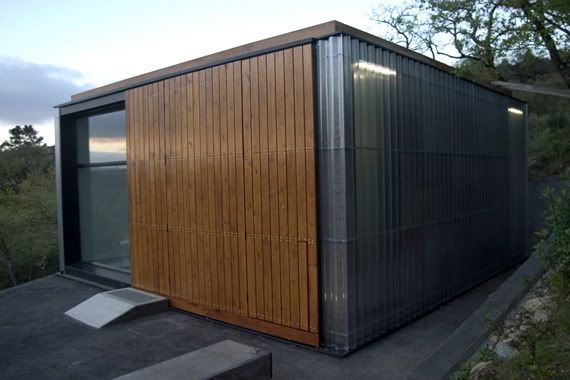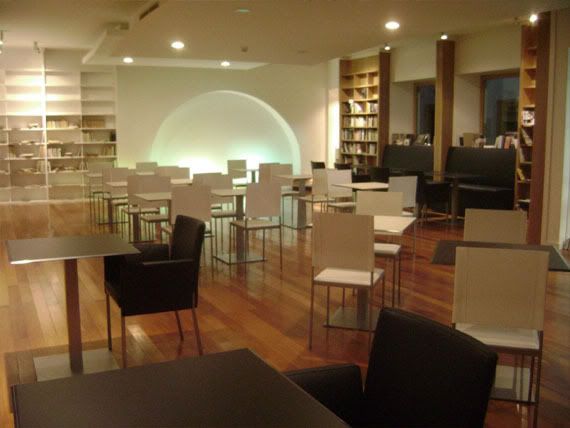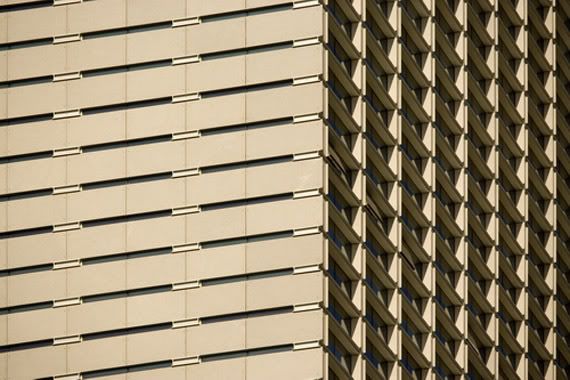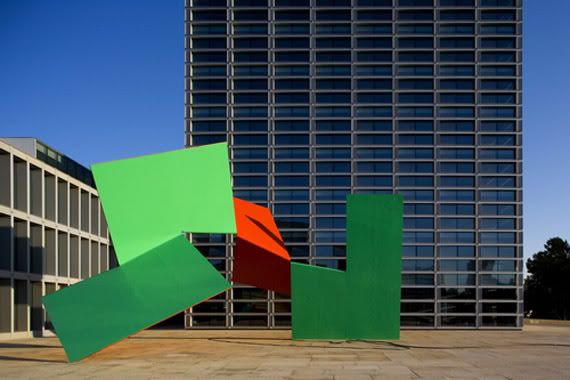We’re stealing our kids
Published Wednesday, October 29, 2008.As I just finished the latest post I find out, via Core77, this recent presentation by Juan Enriquez on Pop! Tech. It is a mandatory analysis of the circumstances that surround the current economic crisis, viewed in enormous detail. The video is long but absolutely essential.
How To Explain The 2008 US Financial Crisis To Your Kids (And Most Adults): a small animated video produced by Say It Visually! presents an explanation on the reasons behind the current financial crisis in very simple terms. The animation is not very elaborate but the message is surprisingly effective.
For something related, I recommend the article What about austerity? published on Boston.com, co-authored by Juan Enriquez, a distinguished thinker in the field of economics and science, also known for his presentations on TED.
His article raises a curious question: that in the stream of opinions regarding the current financial bailout there is one word notably missing: austerity. The dominant thesis seems to be that only spending more money can we prevent a full-blown crisis that, we should notice, was originated in the credit system. Enriquez isn’t saying that such measures aren’t necessary, but he points out that for deficitary nations, these policies may simply be a postponement of the real crisis.
I also recommend watching the two presentations delivered by Juan Enriquez on TEDTalks. Although the subjects are quite specific, his ability to expose universal concepts is truly admirable. In Decoding the future with genomics he presents an interesting fact. In an agricultural society, the difference between the richest and the poorest was 5 to 1. Which means that in such a productivity range - regarding technological capacity and more intensive labour – a successful production would amount to an increase up to 5 times. Today, the differential between more and less productive nations is of 427 to 1. Meaning that in our contemporary economic system, which is based on knowledge, the rules of competitiveness have radically changed.
His second presentation, Why can't we grow new energy?, deepens this relationship between technological development and productive capacity. So today, achieving competitiveness doesn’t rely only on labour flexibility, but depends on our capacity to revolutionize knowledge and innovation patterns. Meaning that a more consequent impact from academic institutions over the real economy is absolutely crucial.
For something related, I recommend the article What about austerity? published on Boston.com, co-authored by Juan Enriquez, a distinguished thinker in the field of economics and science, also known for his presentations on TED.
His article raises a curious question: that in the stream of opinions regarding the current financial bailout there is one word notably missing: austerity. The dominant thesis seems to be that only spending more money can we prevent a full-blown crisis that, we should notice, was originated in the credit system. Enriquez isn’t saying that such measures aren’t necessary, but he points out that for deficitary nations, these policies may simply be a postponement of the real crisis.
I also recommend watching the two presentations delivered by Juan Enriquez on TEDTalks. Although the subjects are quite specific, his ability to expose universal concepts is truly admirable. In Decoding the future with genomics he presents an interesting fact. In an agricultural society, the difference between the richest and the poorest was 5 to 1. Which means that in such a productivity range - regarding technological capacity and more intensive labour – a successful production would amount to an increase up to 5 times. Today, the differential between more and less productive nations is of 427 to 1. Meaning that in our contemporary economic system, which is based on knowledge, the rules of competitiveness have radically changed.
His second presentation, Why can't we grow new energy?, deepens this relationship between technological development and productive capacity. So today, achieving competitiveness doesn’t rely only on labour flexibility, but depends on our capacity to revolutionize knowledge and innovation patterns. Meaning that a more consequent impact from academic institutions over the real economy is absolutely crucial.
Plano B: House in Arruda dos Vinhos
Published Tuesday, October 28, 2008.
Overcoming the contingencies of a restrictive architectural program to create innovative solutions – such was the challenge faced by Lisbon-based architects Plano B, as they set to design this small house in the region of Arruda dos Vinhos, in Portugal. Located in an area of ecological reserve, the new house would be defined by the perimeter of an ancient building in ruins – maintaining the limits of the previous occupation regarding height and area.
The programmatic approach determined the subversion of these limitations by taking them even further. The new project would use the pre-existing materials found in the ruined structure as the basic components of a new constructive system. The present restrictions would therefore become the creative engine for a new architecture.

Sketches

Floor plan

Constructive model
The house began as an exercise on juxtaposed materials to originate a new body – an architectural investigation somewhat similar to other contemporary projects such as the Wall House. Here we find an analogous interest on the development of a complex building skin, integrating traditional construction methods with contemporary materials.




The wood found on the previous building was applied in the structural framing of the house. The stone of the ancient walls was also utilized on its new foundations.


Wall section and external view
In addition to these materials, cork boards were applied to create an external skin, supported by polycarbonate plates to ensure an effective insulation and ventilation of the façade.




By assuming the use of industrial materials - asphalt, concrete, polycarbonate - in combination with natural materials - wood, earth and stone – this house is an interesting example of sustainable practice, maintaining a critical approach towards the project as an area for reflection on the expressive qualities of architecture.
Architecture: Plano B.
References: Judit Bellostes: de madera y adobe, house in Arruda dos Vinhos, Casa em Arruda dos Vinhos: Diário de Obra (blog).
Últimas Reportagens
Published Friday, October 24, 2008.
Últimas Reportagens is the most comprehensive online image library of contemporary Portuguese architecture. The website, maintained by the architectural photographer Fernando Guerra, has just been updated and is now featuring 60 new galleries including a special report of Zaha Hadid’s Zaragoza Bridge Pavilion. Portuguese projects include previously unseen works from Álvaro Siza, Carrilho da Graça, Ricardo Bak Gordon, Paulo David, Aires Mateus, Manuel Graça Dias, ARX Portugal, António Belém Lima, Frederico Valsassina, Cândido Chuva Gomes, Carlos Castanheira and Pedro Gadanho, among many others.
Kaputt!: Single-family house
Published Tuesday, October 21, 2008.

Kaputt! was founded in 2004 as a platform for the collaborative work of eight young architects. They have earned some notoriety as they were acknowledged with an honorable mention in the international competition organized by the Carlsberg Group, for the large-scale urban development of the company’s property in the outskirts of Copenhagen.
I am proud to present you one of their latest projects: a single family house located in the village of Sarilhos Grandes, in Montijo, Portugal. The house plan is determined from the programmatic separation of two distinct bodies; two autonomous units that differentiate the social and private areas of the residence. This distinction is exposed both on its internal organization and on the external expression of the architectural volumetry, whose definition is extended by the walled perimeter that encircles the garden area.



The functional setting is simple. The social volume is more organic, designed for the communitarian family life, in sharp contrast with the private wing. The garden offers an intimate external space and a generous entrance of natural light.


The garden wall is also assumed as part of the architecture of the house, as it suggests a filtered visual connection with the external territory, its trees and hedges becoming a part of its enveloping atmosphere.
Architecture: Kaputt!
Where: the urban side of the economy
Published Thursday, October 16, 2008.
Image via GEAB.
American blog Where, created by Brendan Crain, has just become a collective platform, with the participations of Danny Ahkiam, Mario Ballesteros, Marc Couillais, William Fong, Lisa Hodges, Josh S. Jackson, Dan Lorentz, Katia Savchuk, James Shephard and Peter Sigrist. On the last few days they’ve been publishing a series of articles focused on the urban dimension of the current economic crisis.
A recent text, titled Spain, what have you done?, reflects upon the country’s specific situation and the dramatic moment that’s being faced by the real-estate sector. A situation that reveals the dangerous consequences of urban expansion policies combined with easy available credit directed to the purchase of housing by private citizens. Spain witnessed the steep devaluation of its housing market, up to 50% during the past year. The consequences of this phenomenon are now being revealed by a stagnant construction sector and a receding state economy.
Intensidez Bookstore
Published Tuesday, October 14, 2008.

A new bookstore has opened just a few steps from my doorway. Only it’s not just a bookstore, it’s like a friendly cafeteria with books and music, a place to read, hang out or just drink a warm cup of coffee. If you’re planning to visit the beautiful city of Évora, Intensidez is just the perfect place to visit. They have the best selection of books around, no questioning that. And I’m a big fan of their huge continental breakfast, which is so hard to find in this southern country of mine. And they always seem to have the nicest sweets and desserts. Hmm, sorry, I should be talking about books here, but I’m a bit gluttonous in case you haven’t figured that out by the title of this blog. If there was any justice in this world I’d be the fattest man around. But here I am rambling again…
So, as I was saying, Intensidez is organizing a series of lectures during October and November, open talks with authors and thinkers, taking place Friday nights at 10 pm. Check their blog for details and other info on this sweet little bookshop. You may even find me there if you’re lucky. I’ll be the guy standing behind the big slice of cheesecake.
Portuguese architects at the International Architecture Awards
Published Monday, October 13, 2008.
The International Architecture Awards is a global awards program endorsed by The Chicago Ateneum and The European Centre for Architecture Art Design and Urban Studies. This year’s edition features 114 works from around the world, in recognition of innovative architectural design solutions ranging from civic facilities, private and corporate buildings, industrial structures and urban planning projects. I’m happy to highlight the four Portuguese participations among the 2008 Award Winners.



ARX Portugal: Martinhal House.


Eduardo Souto Moura: Burgo Office Tower.


Promontório: Mora River Aquarium.


Correia Ragazzi: House in Gerês.
Image credits: Fernando Guerra.



ARX Portugal: Martinhal House.


Eduardo Souto Moura: Burgo Office Tower.


Promontório: Mora River Aquarium.


Correia Ragazzi: House in Gerês.
Image credits: Fernando Guerra.
The roundabout guerrilla
Published Friday, October 10, 2008.Here’s a funny story. We’ve all heard of spontaneous urban interventions before such as Guerrilla Gardening and other forms of social activism. This time, a group of proactive Lisbon residents decided to take matters into their own hands and create a “pirate” roundabout on a previously treacherous street intersection.
According to the Portuguese blog Viver na Alta de Lisboa, this group of citizens made insistent calls to the City Council requesting a safe solution for the intersection, where several accidents have already taken place. Their calls have been unanswered for more than a year. Apparently, city officials are undecided as to the implementation of a roundabout or a traffic light system. Tired of waiting, they decided to install an improvised roundabout to regulate the confluent 18 lanes of car traffic.
It only lasted for a couple of days, since this time the City Hall was swift in ordering the removal of the illegal structures. And so the confusion is back in place, leaving the public waiting for the official solution, whenever it comes.
The video above is in Portuguese but the pandemonium kind of speaks for itself.
Álvaro Siza receives RIBA’s Royal Gold Medal
Published Wednesday, October 8, 2008.
Image credits: Fernando Guerra, Paju, South Korea, September 2008.
One could say that Álvaro Siza has won almost every architectural award known to man, including the Pritzker Prize in 1992, the Alvar Aalto Medal in 1998 and the Wolf Prize in Arts in 2001. Siza has now been awarded with the most distinguished British architecture prize: the Royal Gold Medal for Architecture by the Royal Institute of British Architects.
Interestingly enough, the most renowned Portuguese architect has never built a permanent structure in the UK aside from the Serpentine Gallery’s 2005 Summer Pavilion in London, which was designed in collaboration with Eduardo Souto de Moura and Cecil Balmond. Álvaro Siza’s most celebrated creations include the famous Swimming Pools at Leça da Palmeira, the Boa Nova Tea House and the Santa Maria Church at Marco de Canavezes. Currently at the age of 75, Siza remains incredibly active. Among his latest projects you can find works such as the Adega Mayor (Mayor Winery), the Anyang Pavilion and the Ribera Serralo Sports Complex (Swimming Pools) in Barcelona.
You can visit the web-based library Últimas SIZA for an extensive set of projects, courtesy of Fernando Guerra.

Image credits: Fernando Guerra, Paju, South Korea, September 2008.
External references: Guardian: New wave hero Portuguese architect wins UK's most prestigious prize, Guardian: A Gold Medal for Siza? About time, The Architect’s Journal: Álvaro Siza scoops RIBA Royal Gold Medal.
Moving Cities: Peter Zumthor’s models at LX Factory
Published Friday, October 3, 2008.


Images via Moving Cities.
Moving Cities is showcasing an outstanding visual gallery of Peter Zumthor’s models, currently on display at LX Factory as part of the Experimentadesign Lisboa 2009 Warm-Up.
The exhibition «Peter Zumthor: Buildings and Projects 1986/2007» is produced in association with Kunsthaus Bregenz and will be open until November 2nd.
Architectural interlude
Published Thursday, October 2, 2008.ENGLISH EDITION
The English-only edition of the blog A Barriga de um Arquitecto is no longer being updated. Please visit the main page to access new content, additional information and links.
ARCHIVES | ARQUIVO
September 2008 October 2008 November 2008 December 2008 January 2009 February 2009 March 2009 April 2009 May 2009 June 2009 July 2009 August 2009 September 2009 October 2009 November 2009 December 2009 January 2010 February 2010 March 2010 April 2010 May 2010 June 2010 July 2010 August 2010 November 2010 January 2011 February 2011 March 2011 June 2011 July 2011 October 2011 December 2011
